During the production process of hot forging, metal is shaped at temperatures that are higher than the recrystallization temperature of the material. By improving the flexibility of the material, this technique enables the accurate shaping of parts like crankshafts and gears. The hot metal is crushed in between dies, improving the finished product’s strength, durability, and dimensional correctness.
Best Materials for Hot Forging

- Option that resists corrosion
- Suitable for usage in challenging conditions

- Low to middling
- Steels with high carbon content
- Perfect for hot temperatures
- High-stress situations


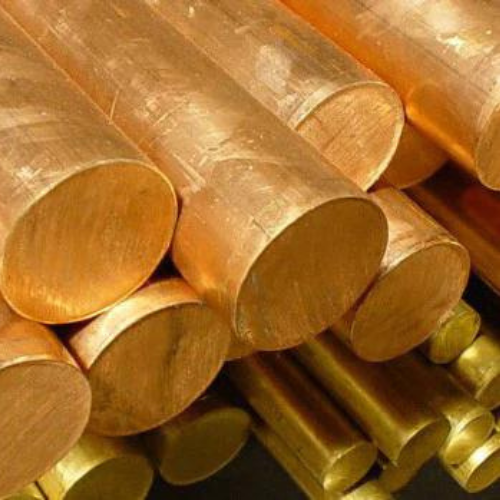

- Non-ferrous
- An alloy resistant to corrosion
- Popular for producing ship instruments
Process of Hot Forging
Warming – Metal can be heated in a furnace to a temperature higher than its recrystallization point.
Distortion – After heating, the metal is molded using a variety of forging techniques, including pressing and hammering, to take on the desired shape.
Chilling – To improve its mechanical qualities and avoid stress-related problems, the forged item is frequently allowed to cool gradually in a regulated environment.
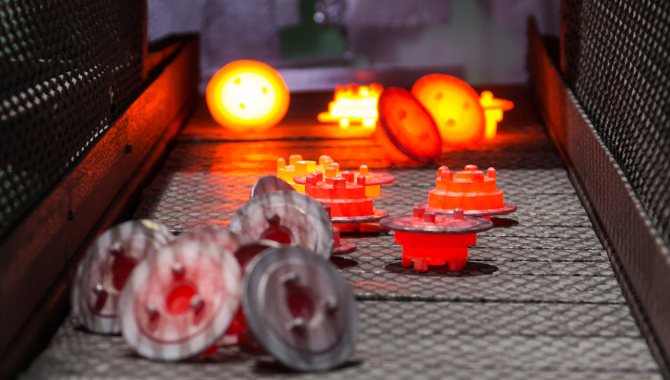
Hot Forging: Advantages And Disadvantages

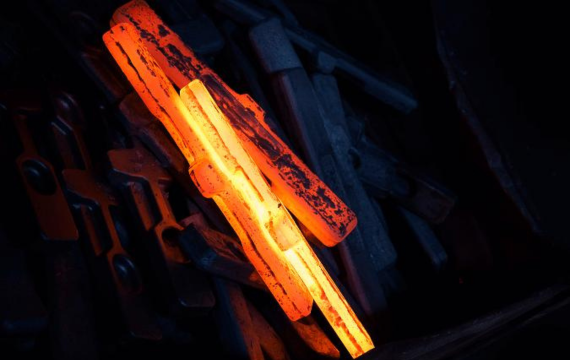
Advantages: Hot Forging
- A greater degree of adaptability.
- It requires less effort or energy to operate with the material as a result of the drop in yield strength.
- During hot forging and the following deformation, pores may shrink (in size) or shut completely.
- In turn, it is possible to lessen or eliminate chemical homogeneity, since the higher temperatures promote diffusion.
- When forging steel at a high temperature, the ductile and weak FCC (face-centered cubic) austenite undergoes deformation rather than the stronger BCC (body-centered cubic) ferrite.
Disadvantages: Hot Forging
- All metal-forming techniques, including hot working, have certain drawbacks. The following are some of these drawbacks.
- Warping and thermal contraction are the culprits for a less accurate tolerance. This occurs when there is inhomogeneous refrigeration.
- There may be differences in the metal’s grain structure.
- Additionally, there’s a chance that the metal being forged, and the environment, will react negatively when hot working.
Hot Forging Vs. Cold Forging
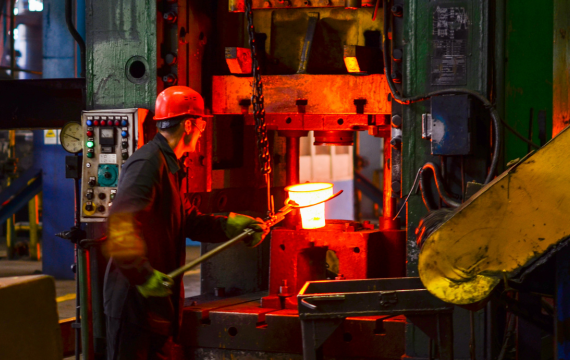
Metal must be heated to a high temperature to be hot forged. Different metals can be hot-forged at the following average forging temperature:
- A maximum of, 1150°C for steel
- Al-Alloys: 360–520°C
- For Cu-Alloys, 700–800 °C
In hot forging, a temperature over the metal’s recrystallization point is applied to the billet or bloom using an inductive heating method or forging furnace.
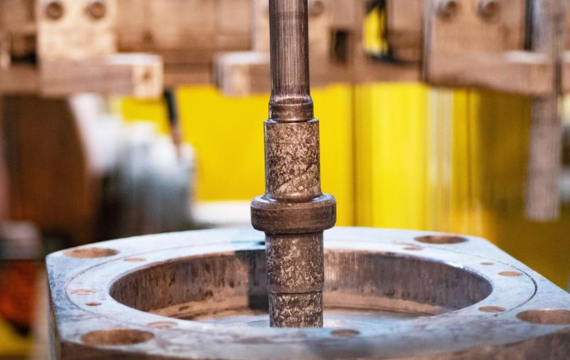
Cold forging distorts metal that has not reached its recrystallization point. It reduces ductility while boosting yield and tensile strength substantially. That frequently occurs at or around room temperature.
In cold forging applications, ordinary or carbon alloy steels are typically the most frequently used metals. Usually, cold forging is done on a closed die.
Hot Forging Applications

Engine Components
- Crankshafts
- Connecting rods
- Camshafts
- Gears.
Suspension and Steering Parts
- Ball joints
- Tie rods
- Steering arms
Transmission Parts
- Gears
- Shafts
- Other transmission components

Landing Gear Components
- Landing gear struts
- Connecting rods
Turbine Blades and Discs
- Turbine blade
- Discs for jet engines
Structural Components
- Brackets
- Fittings
- Fasteners

Fasteners
- Bolts
- Nuts
Anchors and Hooks
- Anchors
- Hooks
- Other structural elements
Cranes and Lifting Equipment
- Hooks
- Shackles
- Lifting links

Drilling Equipment
- Drill bits
- Casings
- Wellhead components
Pipeline Components
- Valves
- Flanges
- Connectors
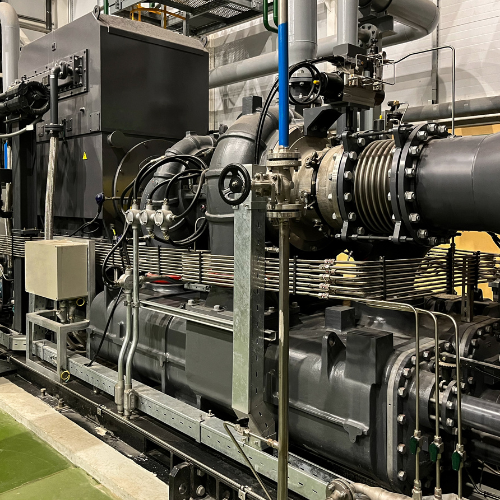
- Gears and Sprockets
- Tool and Die Components
- Bearings
Depending on the material being forged, hot forging usually occurs between 1,100 and 1,300 degrees Celsius (2,012 and 2,372 degrees Fahrenheit).
Closed-die forging: Often referred to as impression-die forging, this technique uses dies with the appropriate shape. The material is squeezed inside the dies to produce an exact final form.
Open-die forging: The material is formed using flat dies in this process, and the result is frequently a rounded or elongated object. Larger parts with simpler shapes work well with it.
Forging happens at high temperatures, whereas cold forging occurs at or near room temperature. Larger and more complicated shapes are best suited for hot forging, which permits more deformation; cold forging is typically used for smaller, simpler pieces.
Many shapes can be produced with hot forging, however, intricate patterns could call for further steps or procedures.
The high temperatures required in hot forging usually mean that a substantial amount of energy is needed.
The Most Important Factors to Consider When Hot Forging
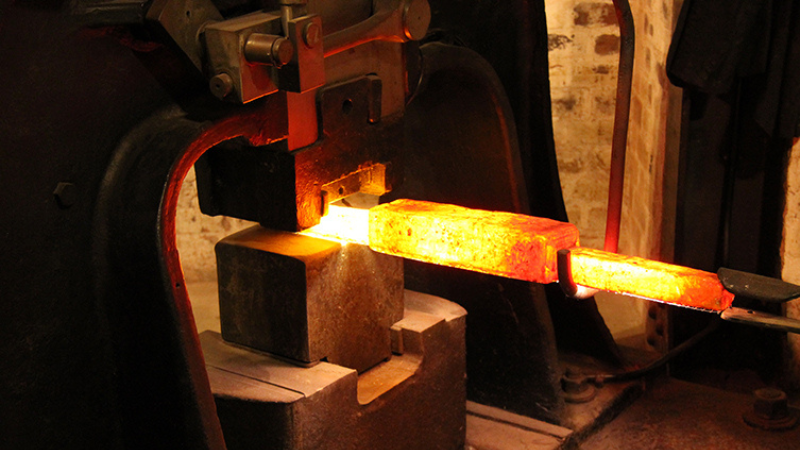
Process of Cooling
Since there is a chance of warpage, cooling must be done very carefully, as was already explained.
Intolerances
Furthermore, it is important to consider that hot forging requires less precise dimensional tolerance than cold forging.
Flash
Hot forgings are divided into two types: flash forgings and non-flash forgings. The components with flash have more sophisticated three-dimensional geometries than those without, with axisymmetric or cyclic-symmetric components being the most common.
Dies
Hot forging dies are custom-made to closely match the customer’s part designs. The process involves compressing the hot metal into the required part shape using:
- Drop
- Power drop
- Counterblow hammers
- Screw presses
- Hydraulic presses
- And other similar machines.



